Why I oppose the Coal Plant in Lamu (and everywhere else in the world)
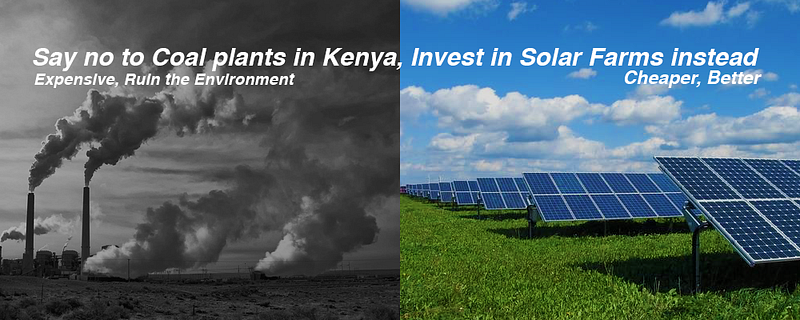
Over the last few days, I have come out and spoken strongly and publicly against the Coal plant in Lamu. I have enjoined myself with other like minded Kenyans who have used the hashtag #deCOALonize. I have engaged in rigorous debate on my social media pages and posted many memes such as these ones.
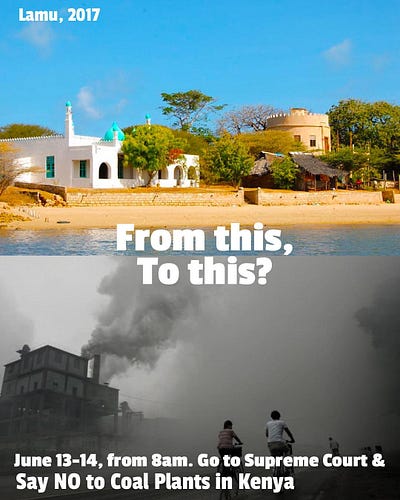

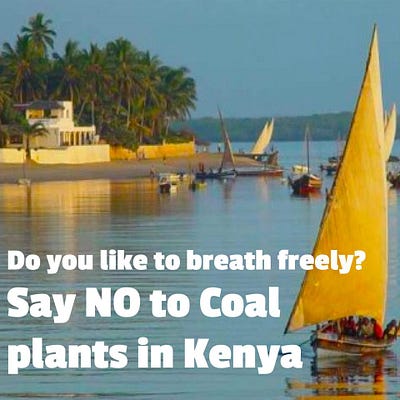
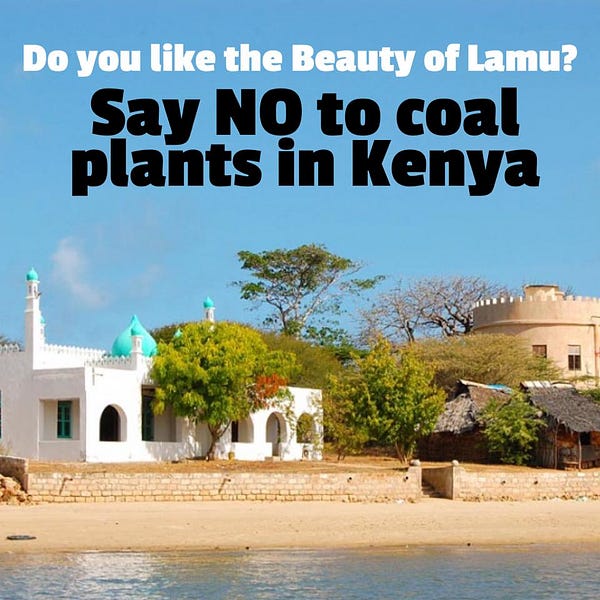
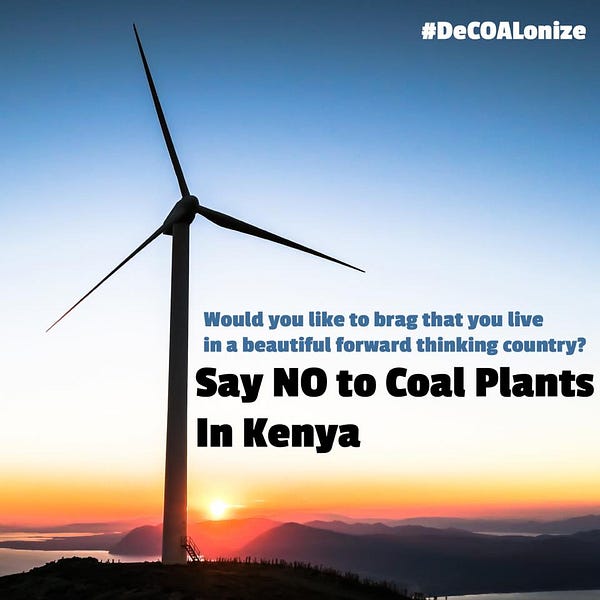
I take this position not as a representative of any of the organisations and companies that I am affiated with, but as a Kenyan of good conscience; as a father of a young boy for whom I hope this country will prosper. I object to the establishment of the coal plant because I believe that for Kenya to prosper in the long term, we must do it sustainably. We have no choice.
“Let Kenya grow for the benefit of its children….after 100 years of growth, we can then join the environmentalists…..” — Wanjiku Lydia.
I fully agree with many of the proponents of the coal plant who have told me that we must quickly get all the power we need to grow our economy as fast as possible. As a businessperson myself, I have to agree with that. I however don’t feel that we would be serving our interests by investing in a coal plant. It is like taking a million dollars in your bank account and in exchange endure cancer in your body in 10 years. We must not seek to industrialise or modernise at all costs.
The evidence that coal is highly destructive to the environment is overwhelming. Kenya’s Lamu Coal plant is for the most part, being fundedby the Industrial and Commercial Bank of China, one of four of China’s state banks. Why would China be supporting the development of the Coal plant in Lamu, when it has taken the decision to close down over 100 coal plants in mainland China? The answer is simple: Coal plants cause death at massive scale according to the Major Air Pollution Sources (GDB MAPS) project, an international collaboration of Tsinghua University, the Health Effects Institute, the Institute for Health Metrics and Evaluation (IHME), and the University of British Columbia.
“The analyses show that coal combustion is the single largest source of air pollution-related health impact, contributing to some 366,000 premature deaths in China in 2013, with industry and household combustion as major contributors as well. The report also indicates that health burdens could grow substantially by 2030 if no further action is taken.”
It is in China’s interest that they “support” Africans to establish coal plants under the guise of supporting our economic development and at the same time providing themselves with jobs for their workers and a healthy income from the $1.2 Billion loan that they will give the Kenyan special purpose vehicle under LAPSSET.
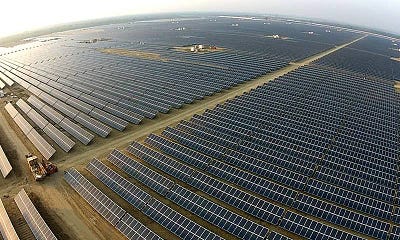
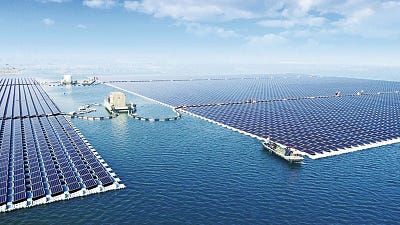
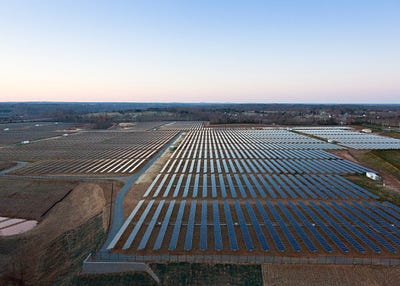
Meanwhile, the developed world — including China, is forging ahead to invest in establishing renewable energy power plants in a way that is more sustainable. China has launched a new floating solar farm just a couple days ago, in the first few days of June, this year. Pakistan is home to the World’s largest Solar park — Quaid-E-Azam Solar Park, which generates 100MW of electricity. According to this 2015 story, “once completed in 2017, the site could have capacity of 5.2 million PV cells producing as much as 1,000MW of electricity — enough to power about 320,000 households.” In America, Technology company Apple has committed $850 for a solar power farm in California.
It is in Kenya’s best interests to take the bold step to invest in clean renewable energy. If we don’t, we shall in twenty years be abandoning the Coal plant and taking aid to establish solar farms and win farms. As a country, we are blessed to be sitting upon the equator — we have an abundance of sunlight all year round. What if we worked with the Northern Counties — Wajir, Marsabit, Mandera, Turkana and Samburu to be the sources of electricity for Kenya? The numbers make sense:
- For every 5MW installed, a solar farm will power 1,515 homes for a year (based on an average annual consumption of 3,300 kWh of electricity for a house) and save 2,150 tonnes of CO2. Approximately 25 acres of land is required for every 5 megawatts (MW) of installation. Kenya’s current electricity demand is 1,600 MW and is projected to grow to 2,600–3600 MW by 2020. Today, Kenya’s effective installed (grid connected) electricity capacity is 1,429 MW — just less than 200MW. Electricity supply is predominantly sourced from hydro and fossil fuel (thermal) sources. If today we need an extra 200MW of power, we need a solar farm of 500 acres.
- 1MW would be considered a utility scale and the total installation cost would depend on the location. In the most expensive location like California or New York it would still cost around $1.20/Watt and in many developing countries I have seen proposals starting around $0.75/Watt or slightly lower. Even given our propensity to overprice our infrastructure projects, lets assume that it will cost Kenya $1.2 per Watt to establish a solar farm. For every 5MW / 25 acres of solar farm we will need $6 million. For the full 200MW shortfall, we shall need $120 million. For 1000MW (Same as the Coal plant) we will need $600 Million (The Coal Plant will cost $2 Billion) and 2500 acres.
BY THE WAY, A coal power plant generates an estimated 1kg of carbon emissions per Kilowatt. Which means that our 1000MW coal plant will generate at least 1 million kg of carbon emissions. Compare that with just 12 grams of carbon emissions per kilowatt in a solar power farm — 12,000kg for the same 1000MW.
Added Advantages:
- If we were to work with the northern counties to generate electricity for Kenya using Solar, we will develop the north as professionals will go and live in Wajir, Mandera, Turkana and Marsabit. The direct kick to the economy of the north would be immeasurable and the people of those counties would consider themselves as part of Kenya.
- Kenya would lead the pack in being at the forefront of clean electricity generation and we would create lasting jobs for young people.
What I am saying is this: it is more cost effective, more sustainable and beneficial to Kenyans to invest in clean energy than it is for them to invest in coal.


